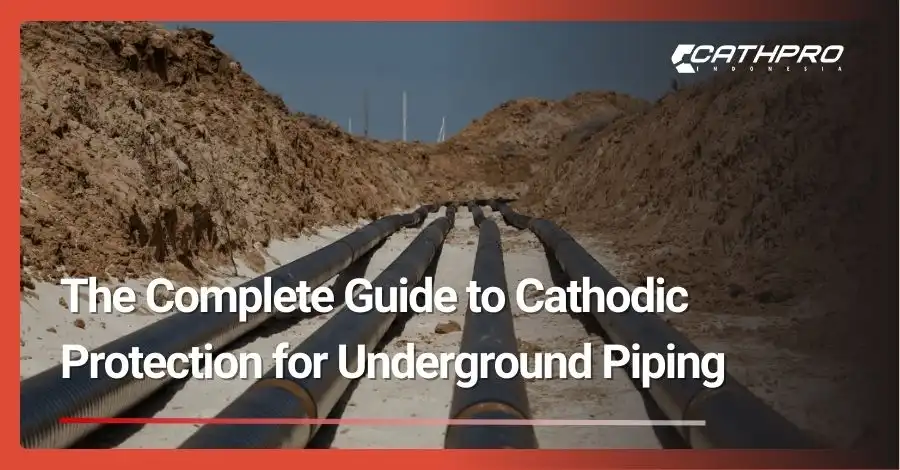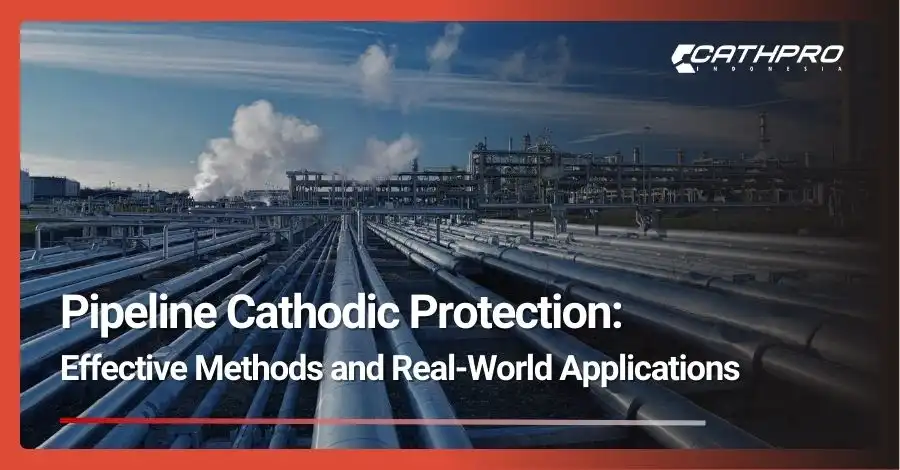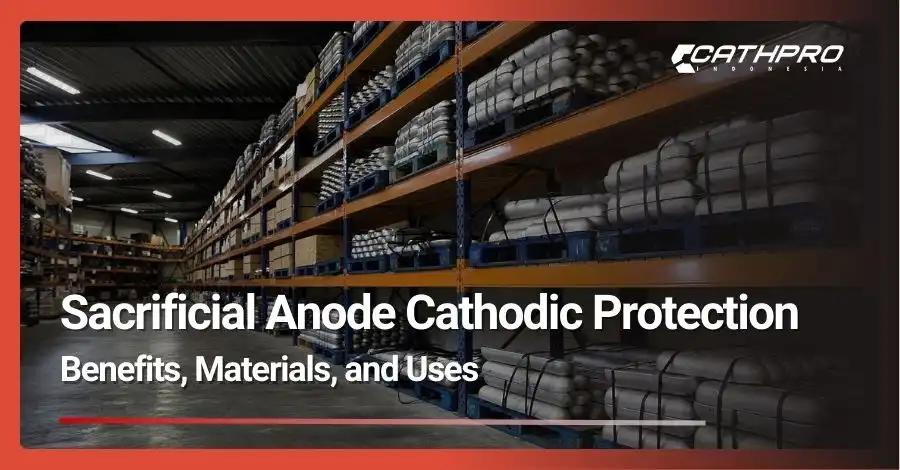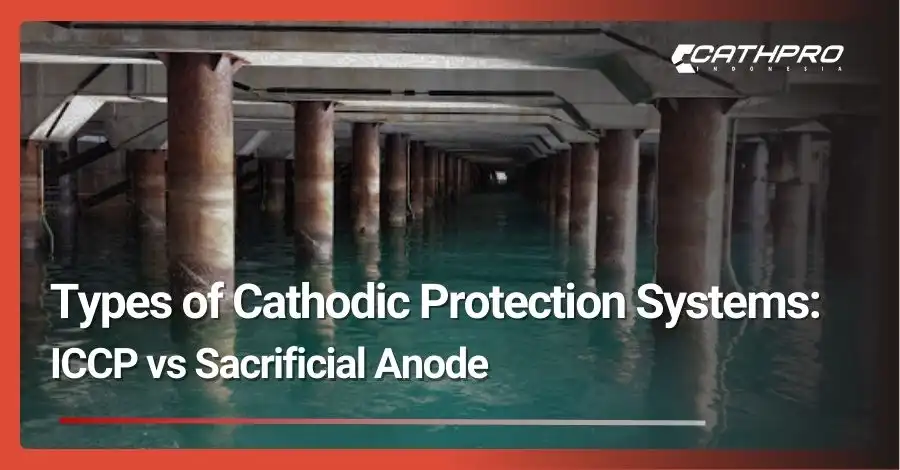Did you know that underground pipeline failures cost the oil and gas industry billions of dollars annually? The invisible enemy lurking beneath the surface—corrosion—silently attacks your valuable infrastructure, threatening both your investment and the environment. Fortunately, there’s a proven solution that has protected underground systems for decades: cathodic protection for underground piping.
Cathodic protection is an electrochemical technique that prevents metal corrosion by making the entire pipe surface act as a cathode in an electrochemical cell. This time-tested method has become the gold standard for protecting buried pipelines, from small residential gas lines to massive transmission networks spanning thousands of miles.
What is Corrosion and Why is it a Problem for Underground Pipes?
Corrosion is essentially a natural electrochemical process where metals return to their original state by combining with oxygen, water, and other elements in the soil. Think of it as nature’s way of “recycling” refined metals back to their ore-like condition.
When your underground pipe is buried, it becomes part of a giant electrochemical cell. Different areas of the pipe surface develop varying electrical potentials due to soil chemistry differences, oxygen levels, and moisture content. These variations create tiny batteries along your pipeline—some areas become anodes (where metal dissolves) while others become cathodes (where reduction reactions occur).
The consequences of uncontrolled corrosion are severe and costly. Pipeline failures can result in dangerous gas leaks, environmental contamination from oil spills, service interruptions affecting thousands of customers, and repair costs that often exceed hundreds of thousands of dollars per incident. The Pipeline and Hazardous Materials Safety Administration reports that corrosion accounts for approximately 18% of all pipeline incidents in the United States.
How Cathodic Protection Prevents Corrosion
The genius of cathodic protection lies in its ability to control the electrochemical process rather than trying to stop it entirely. By applying cathodic protection for underground piping systems, engineers force the entire pipe surface to become the cathode in a controlled electrochemical cell.
Here’s the key principle: when sufficient electrical current flows from the surrounding soil to the pipe surface, it shifts the pipe’s electrical potential to a protective level. At this potential, the pipe cannot act as an anode, which means no metal dissolution (corrosion) can occur. Instead, reduction reactions happen at the pipe surface, effectively making corrosion thermodynamically impossible.
The process works by ensuring electrons flow continuously to the pipe surface, satisfying the electrochemical demand that would otherwise be met through metal dissolution. It’s like giving the corrosion process an alternative path that doesn’t involve destroying your pipe.
The Two Main Types of Cathodic Protection
Sacrificial Anode (Galvanic) Systems
Sacrificial anode systems work on a beautifully simple principle: they use a more reactive metal that “volunteers” to corrode instead of your pipe. These systems create a galvanic couple where the anode material has a more negative electrical potential than the pipe steel.
Key components include:
- Anodes: Typically made from magnesium, zinc, or aluminum alloys
- Connecting cables: Insulated copper wire linking anodes to the pipe
- Test stations: Access points for monitoring system performance
The major advantages of galvanic systems are their simplicity and reliability—no external power source needed, minimal maintenance requirements, and they’re virtually foolproof in operation. However, they have limitations: relatively low current output, shorter lifespan (typically 15-20 years), and they’re most effective in low-resistivity soils.
Impressed Current Systems
Impressed current systems use external power sources to drive protective current through the soil to your pipeline. These systems employ a rectifier (AC to DC converter) that forces current from installed anodes through the earth to the pipe surface.
Essential components include:
- Rectifiers: Convert AC power to controlled DC output
- Anodes: High silicon cast iron, graphite, or mixed metal oxide
- Anode beds: Strategic placement of multiple anodes for optimal current distribution
- Monitoring equipment: Remote monitoring and control systems
Impressed current systems excel in challenging conditions—they can protect extremely long pipelines, work effectively in high-resistivity soils, and provide adjustable protection levels. The trade-offs include higher installation costs, ongoing electrical power requirements, and more complex maintenance procedures.
Key Components of a Cathodic Protection System
Understanding the critical components helps you appreciate how cathodic protection for underground piping creates a comprehensive protection strategy.
Anodes
Anodes serve as the current source, either through galvanic action (sacrificial) or as current discharge points (impressed current). Their design, material selection, and placement directly affect system performance and longevity. Sacrificial anodes are typically manufactured from magnesium, zinc, or aluminum alloys, while impressed current anodes use materials like high silicon cast iron, graphite, or mixed metal oxide.
Rectifiers
Rectifiers in impressed current systems act as the power heart, converting AC utility power to precise DC output. Modern rectifiers include sophisticated monitoring capabilities, allowing remote surveillance and automatic adjustments. These devices ensure consistent current delivery regardless of seasonal soil condition changes or pipeline coating deterioration.
Reference Electrodes and Test Stations
Reference electrodes and test stations provide the diagnostic tools necessary for monitoring system effectiveness. Copper-copper sulfate electrodes are industry standard, offering stable, reproducible potential measurements. Test stations allow technicians to access the pipeline for monitoring without excavation, making routine surveys efficient and cost-effective.
Insulation Joints and Pipeline Coatings
Insulation joints and pipeline coatings work synergistically with cathodic protection. High-quality coatings reduce current requirements by limiting the exposed metal surface, while insulation joints prevent current from flowing to unprotected structures. This combination maximizes protection efficiency while minimizing operating costs.
Designing and Installing a CP System
Successful cathodic protection for underground piping requires careful engineering consideration of multiple factors. Soil resistivity testing determines current requirements and anode placement strategies. High-resistivity soils require more sophisticated anode bed designs, while low-resistivity environments may allow simpler configurations.
Pipeline coating quality significantly influences system design. Well-coated pipes require minimal current, making galvanic systems viable options. Poorly coated or bare pipes typically necessitate impressed current systems with higher current capabilities.
Professional consultation during design phases is crucial. Experienced corrosion engineers use specialized software to model current distribution, predict system performance, and optimize component selection for your specific conditions.
Maintenance and Monitoring: Ensuring Long-term Protection
Even the best-designed cathodic protection system requires ongoing attention to maintain effectiveness. Regular monitoring ensures your investment continues delivering protection throughout its design life.
Pipe-to-soil potential measurements serve as the primary diagnostic tool. Industry standards specify minimum potential requirements (typically -850 mV versus copper-copper sulfate reference electrode) for adequate protection. These measurements reveal system performance trends and identify potential problems before failures occur.
Annual comprehensive surveys by qualified technicians are industry best practice. These surveys include potential measurements at all test stations, current output verification, and visual inspection of above-ground components. The data collected helps optimize system performance and plan maintenance activities.
Conclusion: The Value of Cathodic Protection
Implementing cathodic protection for underground piping represents one of the most cost-effective infrastructure investments you can make. The system extends pipeline service life by decades, prevents catastrophic failures that could cost millions in cleanup and remediation, and demonstrates regulatory compliance with pipeline safety standards.
The technology has proven itself across countless installations worldwide, from small residential systems to massive interstate transmission networks. With proper design, installation, and maintenance, cathodic protection systems provide reliable service for 25-50 years or more.
Ready to protect your underground infrastructure? Contact a qualified corrosion engineering firm from Cathrpo Indonesia to evaluate your specific pipeline protection needs. Professional assessment ensures you receive the optimal cathodic protection solution tailored to your soil conditions, pipeline characteristics, and operational requirements.





